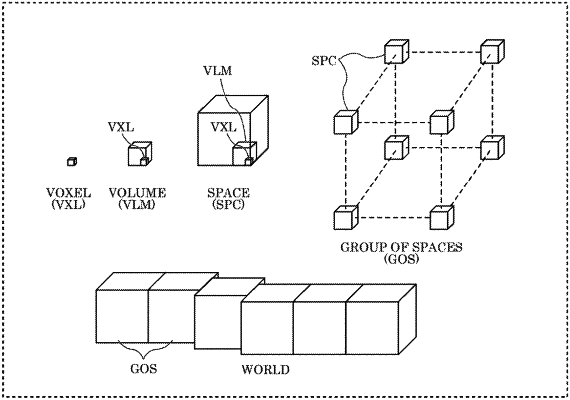| CPC H04N 19/103 (2014.11) [H04N 19/184 (2014.11); H04N 19/44 (2014.11); H04N 19/597 (2014.11)] | 14 Claims |

|
1. A three-dimensional data encoding method, comprising:
generating a tree structure of three-dimensional points included in three-dimensional data;
determining, from plural neighbor occupancy patterns, a neighbor occupancy pattern according to occupancy states of neighboring nodes of a current node;
determining, from plural grouped patterns, a grouped pattern corresponding to the determined neighbor occupancy pattern; and
encoding the current node using information of the determined grouped pattern, wherein
each of the plural grouped patterns corresponds to one or more neighbor occupancy patterns,
the plural grouped patterns include a first grouped pattern and a second grouped pattern,
the plural neighbor occupancy patterns include first neighbor occupancy patterns corresponding to the first grouped pattern and second neighbor occupancy patterns corresponding to the second grouped pattern,
each of the first neighbor occupancy patterns indicates a first number of occupied neighboring nodes,
each of the second neighbor occupancy patterns indicates a second number of occupied neighboring nodes, and
the first number is different from the second number.
|